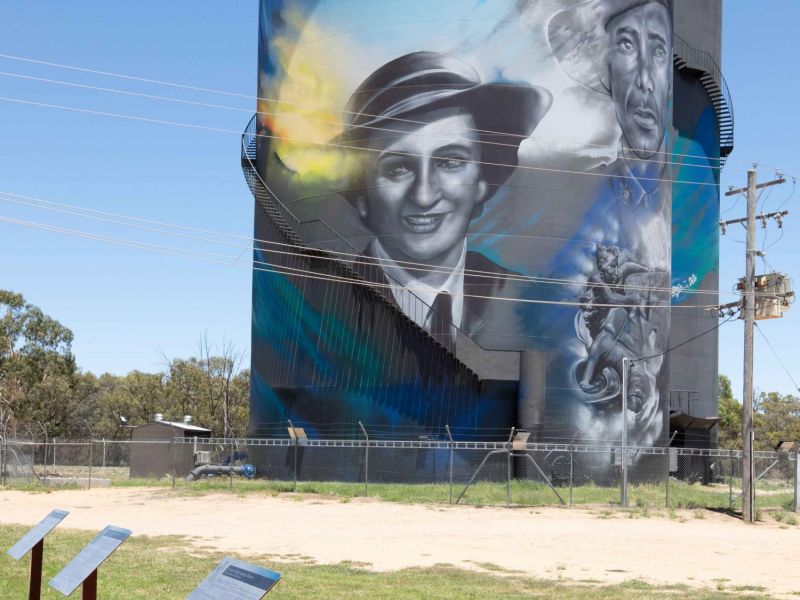PTE William ‘George’ CANNON
George Cannon was born on 3 March 1919 and grew up in Booligal. He was the only child of William Patrick Cannon, a returned Light Horseman who served in Palestine during the Great War, and Isabelle Melrose from Hay, and lived on local properties Gre Gre and Eli Elwah as a child.
George’s early education was by home tutoring before attending boarding school in Sydney from 1929 – 1936. After leaving school he jackerooed in the Jerilderie district of NSW. After some years there he travelled north to Queensland shortly before the outbreak of the Second World War.
In early 1939 he enlisted into the 2/1st Battalion, AIF, 6th Division,
George underwent further training in Egypt and Palestine before moving into eastern Libya in February 1941were his battalion was involved in the capture of Bardia and Tobruk.
6th Division then transferred to Greece to block the anticipated German advance to the Greek Islands. His battalion was involved in the defence Veria but was eventually evacuated to Crete on 2 April 1941, where he immediately became involved in denying the Germans the Retimo airfield. By 30 May 1941, the Germans had encircled his battalion, which by that stage had lost 43 killed, 64 wounded and 511 captured.
Although briefly held by the Germans, George and about 70 others from his battalion escaped and made it back to Egypt on Royal Navy ships, and then on to Palestine where he was transferred to the 2/1st Field Regiment.
By February 1942, with growing concerns that Japan might enter the war, the 6th Division was ordered back to Australia, but was diverted to Ceylon until July 1942 amidst concerns of a Japanese invasion there.
After a short respite in Australia, and now with the Japanese advancing south over the Owen Stanley Range via the Kokoda Track, George’s regiment was given the task of supporting attacks on Buna and Gona.
In January 1943, the regiment was moved to support Kanga Force during the Battle of Wau, as well as to protect the port facilities at Buna and to protect Oro Bay. In February 1943, the regiment was relieved and moved back to Port Moresby.
The 2/1st Field Regiment returned to Australia for leave and training until late 1944 when it was committed to the Aitape-Wewak Campaign, relieving US troops which were redeployed to the Philippines.
George was wounded during a Japanese air raid on Oro Bay and was repatriated back to Australia suffering from malaria and dengue fever.
He married Peg in 1944 and returned to the family property Horton Park, Booligal wher he lived until 1977. He was active in many Booligal community groups and in particular as secretary of the Booligal War Memorial Hall Committee. He was instrumental in maintaining the Anzac Day commemorations at Booligal for many years. George forged many strong friendships with his army colleagues which endured throughout their lives.
George and his wife Peg retired to hay where he died on 3 September 2003.

